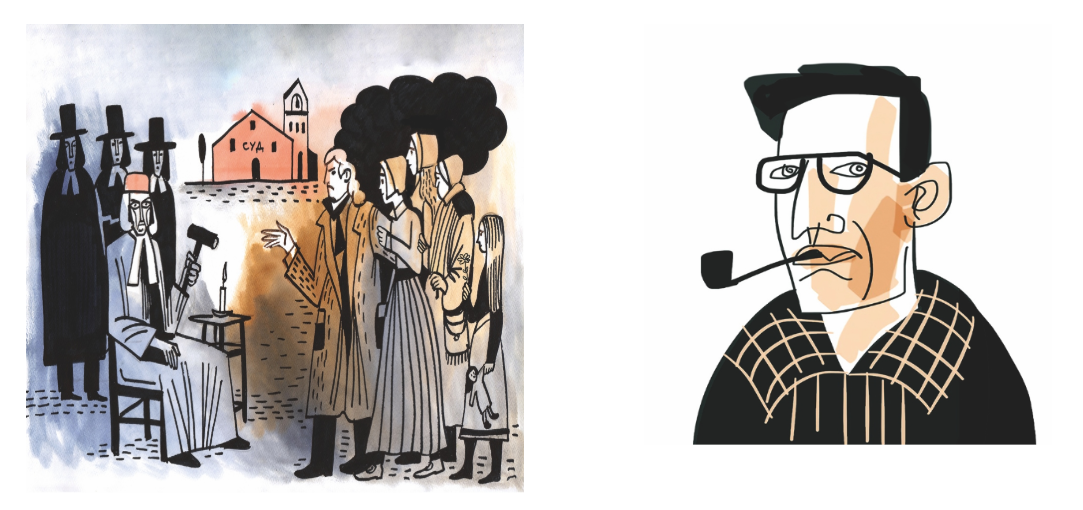"The Crucible" (1953)

"The Crucible" by Arthur Miller
"The Crucible" is a folk drama by American playwright Arthur Miller, based on the events of one of history's most famous witch hunts - the Salem Witch trials. The play served as a harsh allegorical indictment of the government, leading to the author being promptly accused of anti-American activities and blacklisted in Hollywood.
In the 17th century, social relations in British colonies fell under the jurisdiction of English laws. Since the first half of the 16th century, witchcraft laws had been enacted in the Kingdom of England, each building upon previous ones. The play's plot is connected to the Witchcraft Act 1604, whose distinctive feature was that sorcery was recognized as a criminal offense. Those who confessed faced imprisonment, while denial risked capital punishment by hanging.
Criminal investigations in such cases were required to meet the standards of secular criminal procedure: the necessity of proving guilt through evidence and observance of the defendant's rights.
The classification of witchcraft as a felony served the primary objective of the Witchcraft Act 1604, as its proponents sought death punishment, without benefit of clergy, any person who shall conjure evil spirits or commune with them. The fear and panic within the religious Puritan community produced horrific consequences - death sentences rendered without the possibility of presenting evidence to disprove the criminal charges.
One should not expect meticulous historical accuracy from Miller’s drama—the author is far more interested in the philosophy and psychology behind human actions.
The play’s conflict escalates progressively. Several girls were caught in the woods performing some pagan ritual, though in reality it was nothing more than childish mischief. Fearing the pastor’s anger, they fabricate a fantastical story, accusing the community’s most vulnerable members of consorting with the devil and corrupting young souls. Their foolish lies resonate perfectly with the sanctimonious religious society, and Salem soon becomes the stage for a show trial.
The lies of the girls are becoming more and more widespread, while upstanding citizens eagerly join the slander, seizing the opportunity to eliminate rivals through these vicious fabrications.
The tragedy reaches farmer John Proctor's family when his wife Elizabeth is arrested on witchcraft charges. The chief accuser, the pastor's niece Abigail, targets this virtuous woman out of jealousy. The young woman had previously engaged in an illicit affair with Proctor, but the man genuinely repented his immoral actions and refused to abandon his family. John attempts to prove Abigail's malicious intent, but the sinister intent prevails, and the farmer himself ends up in the defendant's dock.
Miller is outraged by the collapse of national morality, which drives him to look to the past, to the image of a patriarchal utopia. The playwright admires the moral fortitude of an ordinary man capable of standing against the hysterical madness of the brutalised crowd. It should be noted that Arthur Miller, who held ancient Greek culture in particular reverence, portrays farmer John Proctor in this work with an epic antique scope.
Within the dramatic text, Miller's voluminous remarks appear within the dramatic text, which are rather publicistic in nature; the artistic conventionality enhances the nightmare of the court transcript.
Signs and Symbols in the Illustration
Witchcraft Laws. The Salem Witch Trials